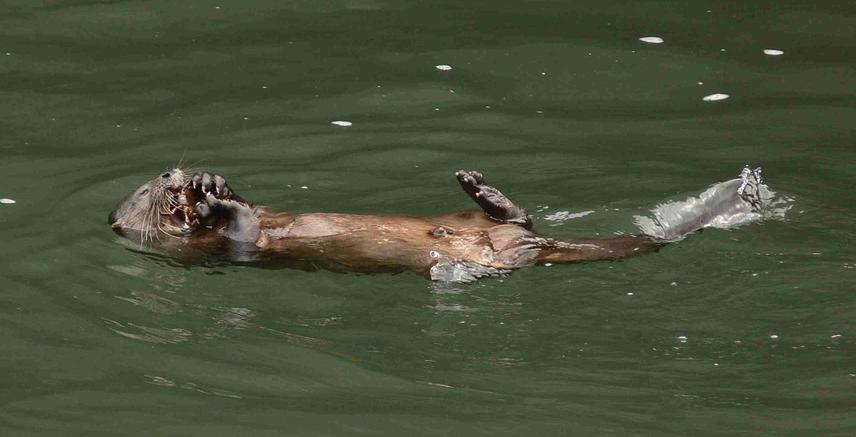Ricardo Alvarez
Other projects
26 Mar 2008
Population Density, Distribution and Conservation Status of Marine Otter (Lontra felina) in the Archipielago de las Guaitecas and Corcovado Gulf
5 May 2010
Population Assessment and Conservation Status of the Marine Otter and the Southern River Otter in the Islands and Channels of Southern Chile
This research, which involves an innovative, easy and effective methodical study, will contribute to the knowledge base of marine otters by means of analysing their population density and distribution in unexplored areas of southern Chile.

Lontra felina in habitat of southern Chile. © C.Delgado, Conservación Marina
Marine Otter (Lontra felina) is an Endangered mustelid that lives in the exposed rocky shores of Peru, Chile and Argentina. During the past century the marine otter populations have decreased considerably, giving rise to their legally protected status by the Chilean state in 1972 and their classification as an Endangered Species by the Red List (IUCN.). Yet even with these protections, new threats such as accidental capture in fishnets, shoreline contamination, human settlement development and illegal poaching, continue to decrease the marine otter population.
Actually, available information about marine otter is not sufficient to allow appropriate take action to support the conservation of the specie. Local estimations from Southern Chilean coastal areas, suggest that substantial marine otter populations exist in this region (principally in the large island of Chiloé), however scientific studies about the population density and distribution have not been conducted up until now.
This research, which involves an innovative, easy and effective methodical study, will contribute to the knowledge base of marine otters by means of analysing their population density and distribution in unexplored areas of southern Chile. This information will assist scientists and government agencies to determine the real status of otter and to establish relevant conservation areas.